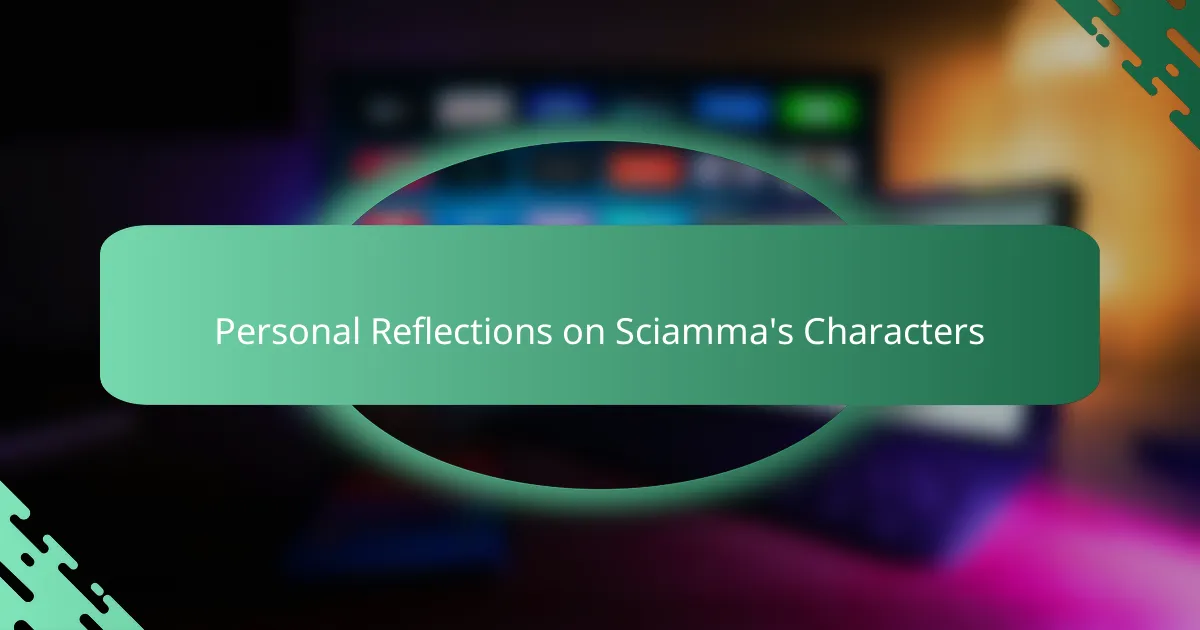Key takeaways
- French cinema, exemplified by filmmakers like Céline Sciamma, emphasizes character development and explores complex themes of identity and relationships.
- Céline Sciamma’s films delve into intimacy and vulnerability, often reflecting personal growth and the nuances of female friendships.
- Character analysis enhances emotional engagement and invites viewers to connect their own experiences with the characters’ journeys.
- Key lessons from Sciamma’s work include the importance of authenticity, the power of vulnerability, and the fluidity of identity.

Overview of French Cinema
French cinema has always been a rich tapestry of artistic expression, capturing the essence of human experience in a way few other cultures can. I remember the first time I watched a French film; it felt like stepping into a world that was both familiar and profoundly different. How can one medium convey such depth and emotion?
The beauty of French cinema lies in its emphasis on character development and the exploration of complex themes. Filmmakers like François Truffaut and Agnès Varda paved the way for narrating stories that delve deep into the psyche of their characters. Each film seems to invite us to reflect on our own lives, doesn’t it?
Today, the landscape continues to evolve with new voices and visions, showcasing a blend of traditional storytelling and innovative techniques. I find myself drawn to the way contemporary French filmmakers challenge conventions, breathing new life into the genre. Is there anything more captivating than a film that leaves you pondering long after the credits roll?

Importance of Character Analysis
Character analysis holds a significant place in film critique, especially with a director like Céline Sciamma, whose characters are rich with nuance. I often find myself reflecting on how understanding a character’s motivations can transform the viewing experience. For instance, when I analyzed the character of Marianne in “Portrait of a Lady on Fire,” it was the subtleties of her desires and fears that truly resonated with me, making me appreciate the film on a deeper level.
When I dissect characters, I’m not just looking for surface-level traits. I’m probing into their emotional landscapes. This excavation reveals how their personal journeys intertwine with broader themes, such as identity and societal expectations. Breaking down Sciamma’s characters allows me to connect on a more personal level, evoking memories of my struggles and triumphs.
- Helps in understanding character motivations and relationships.
- Reveals underlying themes and messages in the film.
- Enhances emotional engagement with the story.
- Invites viewers to reflect on their own experiences through the characters.
- Encourages a deeper appreciation of the filmmaker’s craft and storytelling techniques.

Introduction to Céline Sciamma’s Work
Céline Sciamma’s work has always captivated me with its intimate portrayal of characters. Every film feels like a deep dive into the nuances of identity, often exploring themes of love, friendship, and self-discovery. From “Girlhood” to “Portrait of a Lady on Fire,” her narratives resonate on a profound level, inviting the viewer into the intricacies of each character’s emotional landscape.
Reflecting on my own experiences, I find her characters relatable. They remind me of the confusions and joys of growing up, capturing those fleeting moments of connection that stay with us long after the film ends. Sciamma’s ability to weave together genuine human emotions with striking visual storytelling is something I greatly admire.
- Focus on personal growth and transformation
- Exploration of female relationships and solidarity
- Nuanced portrayal of sexuality and identity
- Use of visual storytelling to enhance emotional depth
- Strong emphasis on the power of female perspectives

Key Themes in Sciamma’s Films
Exploring the key themes in Sciamma’s films reveals a heartfelt exploration of identity and transformation. I remember feeling touched by the shifts in her characters as they navigate their personal journeys. Isn’t it intriguing how a beautifully crafted story can reflect our own evolution?
One prominent theme is the complexity of female relationships. In “Girlhood,” I was struck by the way camaraderie and conflict among young women were so accurately depicted. This portrayal made me think about my own friendships and the way they often shape who we are. I wonder how many viewers find pieces of their own life mirrored in the stories of Sciamma’s characters?
Additionally, Sciamma’s films delve into the nuances of sexuality and self-discovery. I often reflect on the authentic representation of love in “Portrait of a Lady on Fire,” where every glance and unspoken word spoke volumes. This intimacy not only resonates with me but also encourages a broader conversation about the varied experiences of love and desire. How refreshing it is to see such raw and honest storytelling!

Methodology for Dissecting Characters
When I attempt to dissect characters in Céline Sciamma’s films, I adopt a layered approach. I start by observing their interactions, as these dynamics often reveal deeper emotional truths. It reminds me of watching “Portrait of a Lady on Fire,” where the subtle glances speak volumes, and I find myself leaning closer to the screen, eager to catch every nuance.
To delve deeper, I pay attention to the following aspects:
- Character Background: Exploring their past and how it shapes present behavior.
- Dialogues and Monologues: Analyzing the language used reveals their emotional state.
- Visual Storytelling: Noticing body language, expressions, and settings that frame their experiences.
- Relationships: Evaluating how they connect with others provides insight into their motivations.
- Character Arcs: Observing transformation or stagnation across the narrative, which often creates an emotional impact.
This methodology not only enriches my understanding but also connects me more deeply to the characters’ journeys.

Personal Reflections on Sciamma’s Characters
Céline Sciamma’s characters resonate with me in ways I didn’t expect. The subtlety in their emotional expressions often mirrors my own life experiences, making me reflect on moments of vulnerability. For instance, in “Girlhood,” I remember feeling a rush of nostalgia as I watched the complex friendships unfold, reminding me of my own youthful connections that were both beautiful and messy.
As I dissect each character, I find myself not just analyzing their actions but also contemplating the layers that shape their identities. The way Sciamma portrays self-discovery feels profoundly personal; it’s like she’s giving voice to the thoughts I’ve grappled with in my own journey. I often wonder how many others feel that same connection and recognize their struggles through these beautifully crafted narratives.
I can’t help but appreciate Sciamma’s ability to blend the universal with the intimate. Each character’s journey invites me to engage with my own fears and aspirations. Isn’t it powerful how a film can evoke such deep introspection? Her work compels me to explore my own emotional landscape while encouraging a dialogue about vulnerability and growth.

Lessons Learned from Character Exploration
When exploring Céline Sciamma’s characters, I’ve learned that authenticity is at the core of their development. Each character feels multi-dimensional, rooted in real emotions and struggles. This reminds me of my own experiences navigating relationships—there’s a depth to her characters that resonates with anyone who’s felt lost or searching for identity.
One key lesson is the importance of vulnerability. Characters like those in “Portrait of a Lady on Fire” exemplify how allowing oneself to be open can lead to profound connections. I remember a moment in my life when sharing my fears changed everything in a friendship; Sciamma captures that beautifully in her work.
Another significant aspect is the fluidity of identity. Her characters often challenge traditional norms, making me reflect on my own perceptions of self and others. It’s a refreshing reminder that identity isn’t static; it evolves with experiences and interactions.
| Character | Lesson Learned |
|---|---|
| Marianne | Authenticity in artistic expression |
| Héloïse | The power of vulnerability in relationships |
| Norah | Fluidity of identity through life experiences |